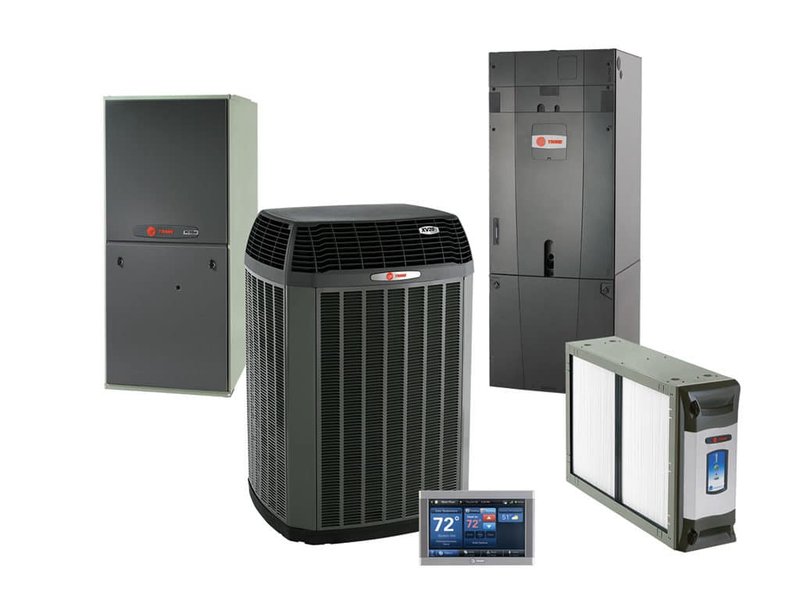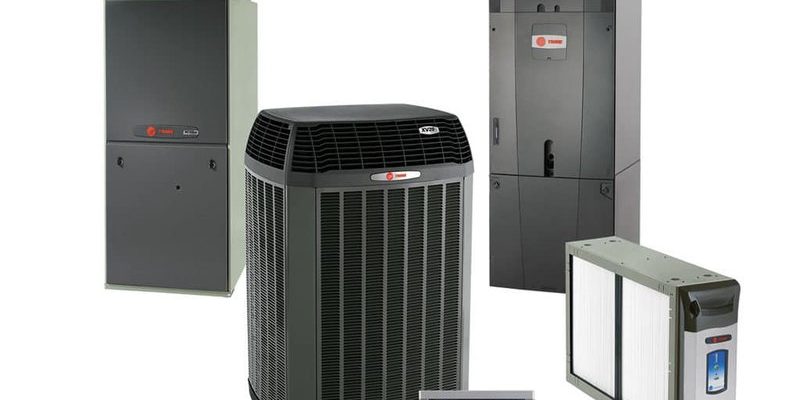
Imagine the warranty as a safety net for your HVAC system, catching you when a crucial part fails or a weird issue pops up. But, just like any safety net, it has its limits and rules. You might hear folks tossing around phrases like “parts coverage” or “base warranty,” and it can all sound confusing if you’re not an HVAC pro. Honestly, knowing *exactly* what Trane’s warranty covers is the key to saving money, headaches, and a few “why is it blowing hot air in July?” moments.
How The Trane HVAC Warranty Works
Let’s start by pulling back the curtain on how Trane’s warranty actually functions. At its core, Trane offers coverage for defects in materials or workmanship that cause your HVAC system to break down—essentially, anything that’s not your fault. The warranty typically kicks in as soon as you register your new system, which is kind of like pairing a new remote to your TV: if you skip the syncing process, you don’t get full functionality.
Here’s the thing: Most new Trane systems come with a *base limited warranty*, but the big perks kick in if you *register* your product within 60 days of installation. This is their way of making sure you’re the original owner and giving you access to extended coverage. If you forget to register, you still have coverage, but it’ll be shorter and less robust—think of it as running on backup batteries instead of being plugged into the wall.
It’s also important to note that the warranty only applies to Trane-branded parts installed in residential systems. Try to swap in off-brand components or a universal remote (so to speak), and Trane probably won’t back you up. Keeping your warranty strong means using Trane-approved parts and licensed professionals for any major installs or repairs.
What the Base Limited Warranty Covers
The *base limited warranty* is the foundation of Trane’s promise. At its simplest, it covers major components—like compressors, coils, and internal functional parts—that might have a manufacturing defect. Let me explain what’s usually covered under this base warranty:
- Compressor – The heart of your air conditioner or heat pump. If it fails because it was defective from the start (not from normal wear), Trane will supply a replacement part.
- Coils – Both evaporator and condenser coils, which are critical for heat exchange. If they spring a leak or break due to faulty manufacturing, covered.
- Internal Functional Parts – Think relays, motors, and circuit boards. These are like the system’s “brains and muscles,” and Trane provides parts if they fail due to original defects.
But, and this is a big “but,” the *base warranty doesn’t cover labor*. If a part fails, Trane supplies the part—your local HVAC tech bills you for the work to swap it out. That’s kind of like getting a free battery when your remote dies, but still paying the tech to pop it in and reset the system.
Registered Limited Warranty—Why Registration Matters
Registering your Trane system unlocks the *Registered Limited Warranty*, which is, frankly, a much better deal. Here’s how it works: you install your new system, hop online or call Trane, and provide your details within 60 days. Boom—your basic coverage is upgraded, usually from 5 to 10 or even 12 years for certain parts.
This longer coverage can be a lifesaver if something big goes wrong a few years in. Think of it as the difference between buying a phone and getting that extra protection plan—except, in this case, it’s free if you simply register. If you forget to register, the coverage is typically cut in half.
What’s more, the registered warranty follows the *original owner*. If you sell your house, the coverage usually doesn’t transfer, though some exceptions and transferable warranties exist (more on that in a bit). Always double-check the paperwork or ask your installer about your exact policy.
What’s Not Covered—Common Misunderstandings
Here’s where people often get tripped up. The Trane HVAC systems warranty isn’t a blanket get-out-of-jail-free card. Lots of everyday issues fall outside its limits.
- Labor costs – As I mentioned earlier, you’re on the hook for the technician’s time. The warranty covers *parts only* unless you buy an additional labor warranty.
- Regular maintenance – Need to change a filter, reset a code, or clean the system? That’s considered routine upkeep and isn’t covered. Skipping maintenance can even void some warranty terms.
- Improper installation or misuse – If the unit wasn’t set up by a licensed pro or you used it in a way Trane doesn’t recommend, you’re probably out of luck.
- Aftermarket or unapproved parts – Like trying to pair a universal remote and calling the support hotline—they’ll politely tell you, “Sorry, can’t help with that.”
So, if your system needs troubleshooting for basic stuff, you’ll need to handle that or call in a tech (at your cost). It’s always a good idea to keep records of regular maintenance and who did your installation—Trane might ask for proof if you ever need to make a claim.
Extended and Optional Labor Warranties
Let’s be real: the idea of paying for parts but not labor can sting, especially when you see the hourly rate of a good HVAC tech. Trane recognizes this pain point, so they offer something called an *optional labor warranty* through authorized dealers.
These extended warranties cover both the cost of replacement parts *and* the labor to install them. The terms are usually three, five, or even up to ten years, depending on what you buy. It’s a bit like getting total coverage for your phone instead of just a free battery after a year—it covers the whole repair process, not just the component.
You might be wondering, “Should I buy an extended labor warranty?” It depends on your peace of mind and your willingness to gamble on repair costs. For some people—like those who don’t want any surprises—a labor warranty is worth the extra upfront investment.
Warranties for Different Trane Products
Trane builds a range of HVAC systems, and the warranty can differ slightly based on the product line. For example, an air conditioner might have different coverage from a furnace, air handler, or heat pump.
- Air Conditioners & Heat Pumps – Typically, these get a 10-year parts warranty (when registered) on major components.
- Furnaces – You’ll often see a lifetime warranty on the heat exchanger and 10 years on internal working parts.
- Air Handlers & Coils – These follow similar rules, with 10-year coverage for registered owners.
There are also special rules for things like thermostats, zoning modules, or indoor air quality add-ons. Always check the specific warranty terms for your model—Trane’s HVAC warranty code can vary by product and region.
How To Make a Warranty Claim with Trane
So, let’s say your Trane system is blowing hot air in February, and you’re suddenly wrapped in blankets wondering, “Now what?” Here’s how you’d use the warranty coverage:
- Step 1: Gather your system information: model, serial number, installation date, and proof of registration.
- Step 2: Contact your original installer or an authorized Trane repair specialist. Many dealers handle warranty claims directly for you.
- Step 3: The technician will diagnose the issue. If it’s due to a covered parts defect, they’ll coordinate with Trane to supply the part.
- Step 4: You pay the labor cost (unless you bought an extended labor warranty), and the part is replaced at no charge.
It’s a bit like troubleshooting a stubborn remote—you try all the resets, but sometimes you just need the pros (and the warranty) to save the day.
Transferability and Selling Your Home
If you plan to sell your house, you might be curious if the Trane HVAC warranty follows the system or stays with you. In most cases, the registered limited warranty sticks with the *original owner*. However, Trane does offer a one-time transfer for some products—provided you send in the transfer request within 90 days of closing the sale.
Why does this matter? Having a transferable warranty can be a nice selling point, showing potential buyers they’re covered if something needs troubleshooting or code resets. Just remember, you’ll need to read the fine print and maybe pay a small transfer fee.
Comparing Trane’s Warranty To Other Brands
Here’s the honest truth: Trane’s warranty is fairly typical for the big-name HVAC world—but there are a few key differences. Some brands, like Goodman, offer longer base warranties even if you don’t register. Others may include limited labor coverage up front. Trane’s focus is on *reliability*, which is why their coverage leans heavily on high-quality parts and rigorous installation requirements.
If you’re considering a universal or aftermarket system to save a few bucks, think carefully. You might lose out on valuable warranty support and troubleshooting help down the road. In most cases, sticking with Trane-approved components and installers keeps your safety net in place and your system easy to reset when things go off script.
If there’s one piece of advice to remember, it’s this: Read your warranty document, register your system, and use certified pros for installs and repairs. That’s the trifecta for keeping your Trane coverage strong.
When you boil it all down, the Trane HVAC systems warranty provides a solid safety net for your heating and cooling investment. It covers parts for years—sometimes a decade or more—when you follow the rules and keep up with registration. While labor and routine troubleshooting aren’t included by default, optional labor coverage and careful system syncing with Trane-approved pros help fill in the gaps. Even if you never need to use your warranty, just knowing exactly what’s covered can make owning your system feel a whole lot easier—and more comfortable.
